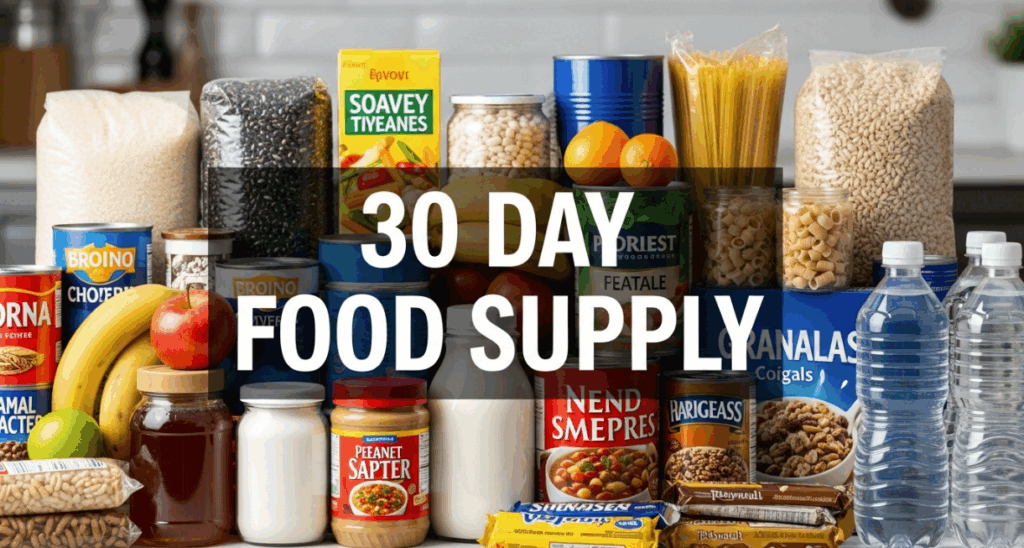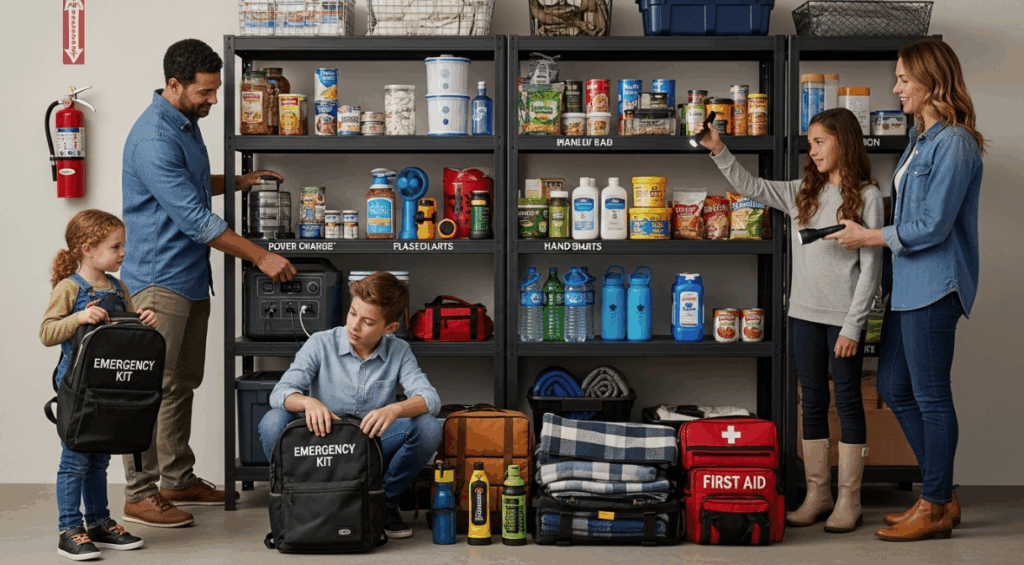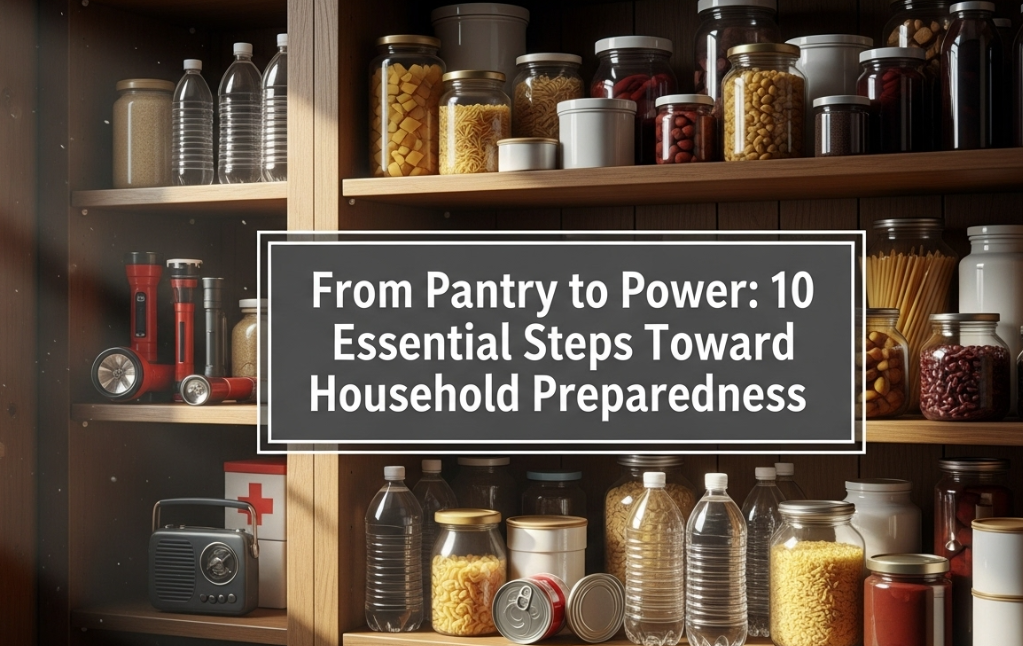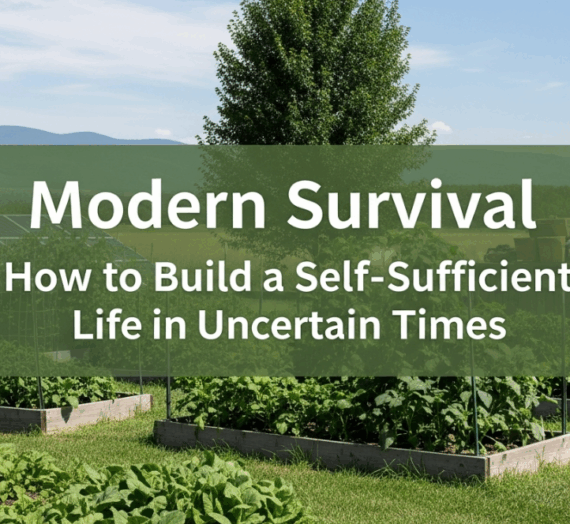
Introduction
Emergencies can strike without warning, and being unprepared leaves families vulnerable to panic and shortages. Whether it’s a natural disaster, power outage, supply chain disruption, or civil unrest, household preparedness ensures your family has the essentials to stay safe, nourished, and secure. This guide will walk you through 10 actionable steps to help transform your home into a prepared and resilient space from pantry basics to backup power solutions.
Why Household Preparedness Matters
Recent global events from pandemics to wildfires and inflation have exposed how fragile our daily conveniences can be. Relying solely on just-in-time delivery, power grids, and grocery chains leaves families exposed. Preparedness is not paranoia; it’s peace of mind. It gives you control in uncertain times and the ability to help others when needed. Best of all, building household resilience doesn’t require a bunker just smart planning and simple action. For more details, see Google Search on household preparedness or Bing Search on household preparedness.
Common Myths That Hold People Back
- “Preparedness is only for preppers.” In reality, every family benefits from emergency readiness. It’s about responsibility, not survivalism.
- “It’s too expensive.” Many steps, like storing water or rotating canned goods, cost very little and can be done incrementally.
- “I’ll deal with it when something happens.” Emergencies offer no warning. Acting after disaster strikes is too late.
Step-by-Step Guide: 10 Essentials for Household Preparedness




1. Build a 30-Day Food Supply
Start with shelf-stable foods your family already eats rice, pasta, beans, canned vegetables, soups, and nut butters. Gradually expand to 30 days of meals, including snacks, spices, and comfort items. Rotate inventory to avoid waste.
2. Store Clean Water
Store at least one gallon of water per person per day for 7–30 days. Use food-grade containers and rotate every six months. Invest in a gravity-fed filter for long-term purification options.
3. Create an Emergency Communications Plan
Designate an out-of-state contact, print emergency contacts, and ensure everyone in your household knows where to meet if separated. Keep a portable radio for receiving updates without power.
4. Prepare a First Aid & Health Kit
Include basic medical supplies (bandages, antiseptics, gauze), over-the-counter medications, prescription backups, and hygiene essentials. Add vitamins and natural remedies like activated charcoal and tea tree oil.
5. Secure Backup Power Sources
Solar-powered lanterns, hand-crank radios, and battery packs can keep devices running. For longer outages, consider a portable solar generator or inverter connected to a car battery.
6. Strengthen Home Security
Install motion lights, reinforce doors and windows, and create zones of safety within your home. Emergency locks and alarms add peace of mind in volatile scenarios.
7. Store Emergency Cash




In a crisis, card payments may not work. Keep small bills hidden in waterproof pouches to purchase fuel, food, or supplies when ATMs are down.
8. Learn Practical Skills
Basic survival knowledge first aid, water purification, cooking without power can make a major difference. Practice skills regularly so you’re confident when you need them.
9. Keep Important Documents Safe
Protect birth certificates, insurance policies, and identification in waterproof folders. Store digital backups on a flash drive kept in your go-bag.
10. Pack a Family Go-Bag
Have one bag per family member with essentials for 72 hours: clothing, food bars, water, flashlight, toiletries, phone chargers, maps, and comfort items like a stuffed toy or journal.
Essential Tools and Supplies Checklist
- Manual can opener
- Multitool or basic toolset
- Solar-powered chargers or battery banks
- Fire extinguisher and smoke detectors
- LED headlamps and candles
- Emergency radio (NOAA or crank)
- Heavy-duty trash bags and duct tape
Budget-Friendly Tips
- Build your emergency pantry slowly by adding one or two extra items during weekly grocery runs.
- Shop secondhand for tools, radios, and survival gear.
- DIY your own water storage containers using cleaned juice or soda bottles.
- Use printable checklists to track inventory and avoid unnecessary purchases.
Real-Life Story: Preparedness in Action

During a severe winter storm in Texas, the Wallace family lost power and water for five days. Thanks to their 30-day pantry, stored water, and portable solar generator, they stayed warm, nourished, and safe. They even helped neighbors with food and charging devices. Their experience turned skeptics into believers, showing how vital readiness is for every household.
FAQs About Household Preparedness
How long does it take to become fully prepared?
Start small within a few weeks, you can be ready for most short-term emergencies. Full self-reliance takes time and should be built gradually.
What’s the best way to store emergency food?
Use airtight containers in a cool, dark place. Rotate items regularly and label with expiration dates.
How do I include kids in the process?
Make preparedness fun by turning food storage into a game, involving them in packing their go-bags, and practicing drills as a family.
Key Takeaways
- Preparedness is essential for every household, regardless of location or income.
- Start with food, water, power, and first aid before expanding.
- Use checklists and rotate supplies to stay organized and efficient.
- Small steps taken now create big peace of mind later.
Ready to take control of your family’s safety and resilience? Start building your preparedness plan today. Bookmark this guide, print the checklist, and share it with someone who needs a push to start. Subscribe to our newsletter for weekly readiness tips, product reviews, and downloadable resources. Your future self will thank you.
© 2025 Froyo Space. All rights reserved. Stay on our website for more tips and tools for family preparedness.
| Key Aspect | Summary |
|---|---|
| Food & Water | Build a 30-day supply of shelf-stable food and store at least one gallon of water per person daily, rotating regularly. |
| Communication | Establish emergency contacts and keep portable radios for updates. |
| Health & Safety | Prepare a first aid kit, secure home, and learn basic survival skills. |
| Power & Security | Use backup power sources like solar generators and strengthen home security. |
| Financial Preparedness | Keep emergency cash in waterproof pouches for crises when cards don’t work. |
| Important Documents & Go-Bags | Protect vital documents and pack go-bags for every family member with essentials for 72 hours. |

